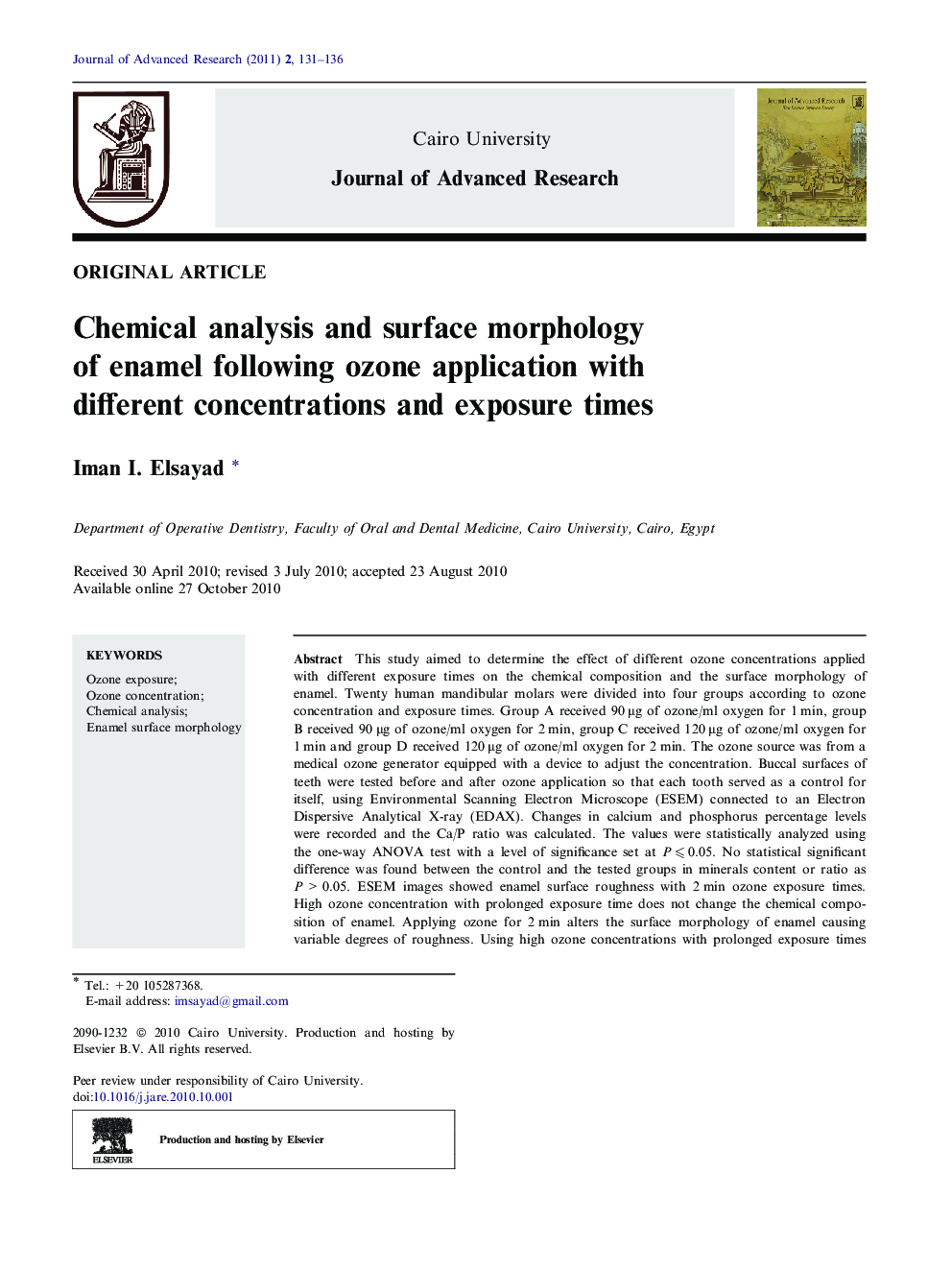| Article ID | Journal | Published Year | Pages | File Type |
|---|---|---|---|---|
| 826453 | Journal of Advanced Research | 2011 | 6 Pages |
This study aimed to determine the effect of different ozone concentrations applied with different exposure times on the chemical composition and the surface morphology of enamel. Twenty human mandibular molars were divided into four groups according to ozone concentration and exposure times. Group A received 90 μg of ozone/ml oxygen for 1 min, group B received 90 μg of ozone/ml oxygen for 2 min, group C received 120 μg of ozone/ml oxygen for 1 min and group D received 120 μg of ozone/ml oxygen for 2 min. The ozone source was from a medical ozone generator equipped with a device to adjust the concentration. Buccal surfaces of teeth were tested before and after ozone application so that each tooth served as a control for itself, using Environmental Scanning Electron Microscope (ESEM) connected to an Electron Dispersive Analytical X-ray (EDAX). Changes in calcium and phosphorus percentage levels were recorded and the Ca/P ratio was calculated. The values were statistically analyzed using the one-way ANOVA test with a level of significance set at P ⩽ 0.05. No statistical significant difference was found between the control and the tested groups in minerals content or ratio as P > 0.05. ESEM images showed enamel surface roughness with 2 min ozone exposure times. High ozone concentration with prolonged exposure time does not change the chemical composition of enamel. Applying ozone for 2 min alters the surface morphology of enamel causing variable degrees of roughness. Using high ozone concentrations with prolonged exposure times for caries reversal or prevention and for bleaching may be contraindicated if this changes the surface morphology of enamel.
